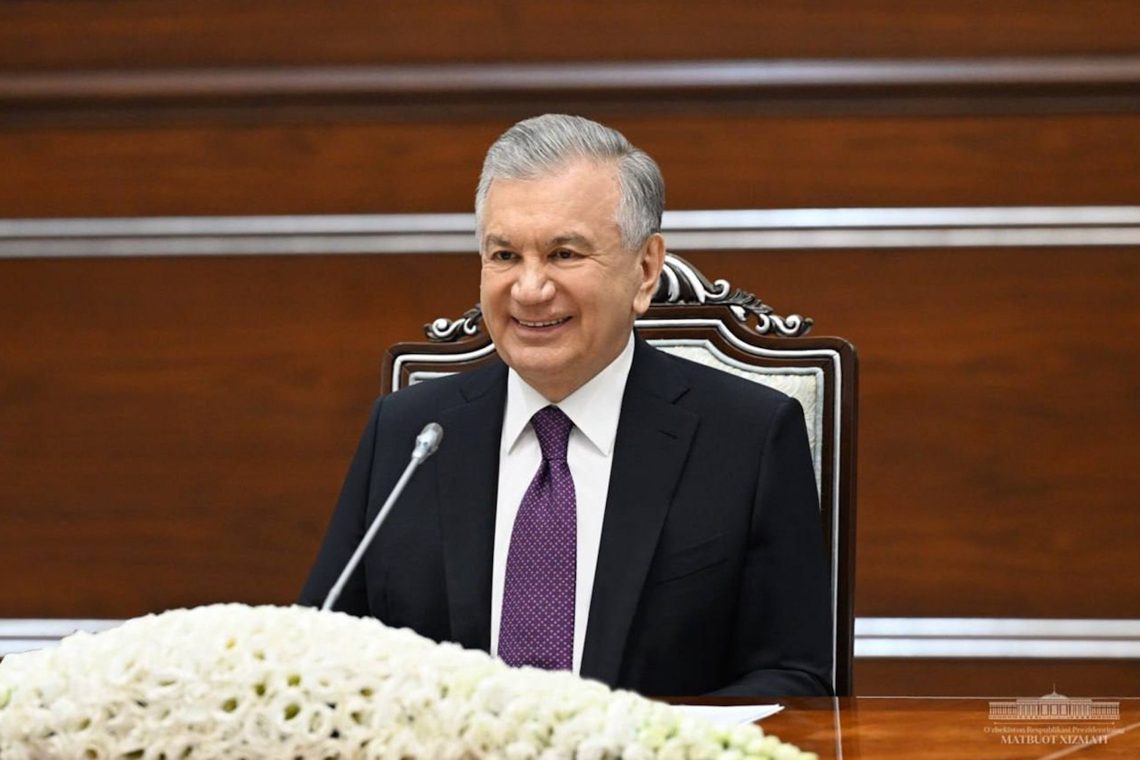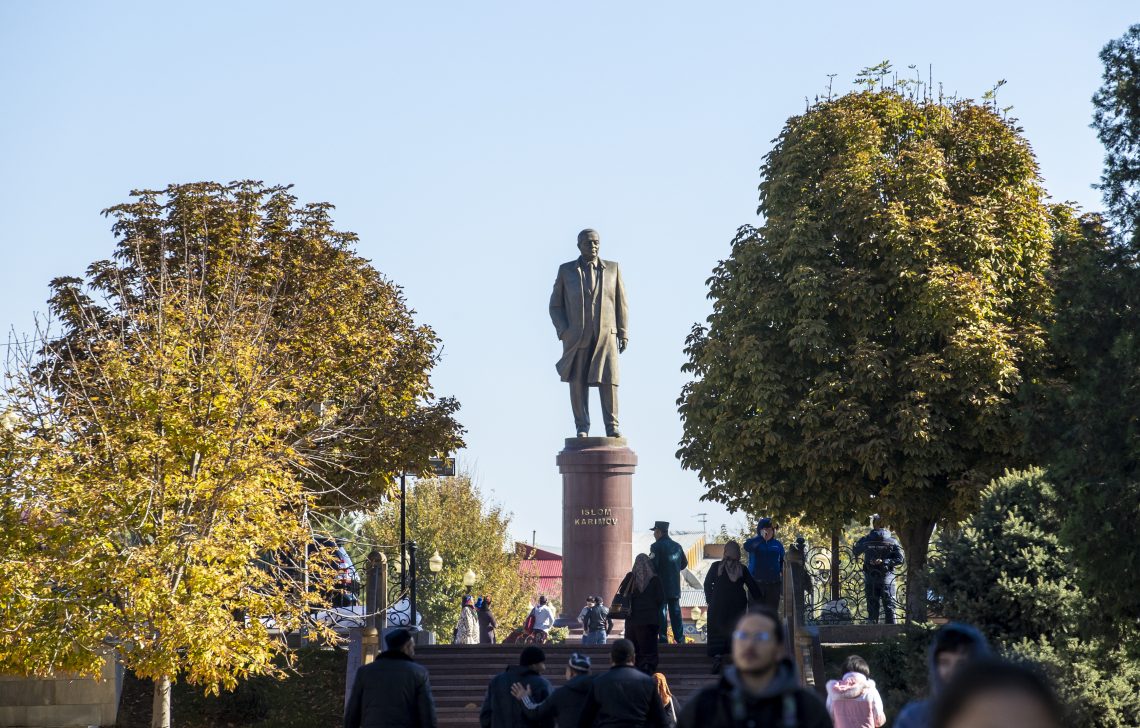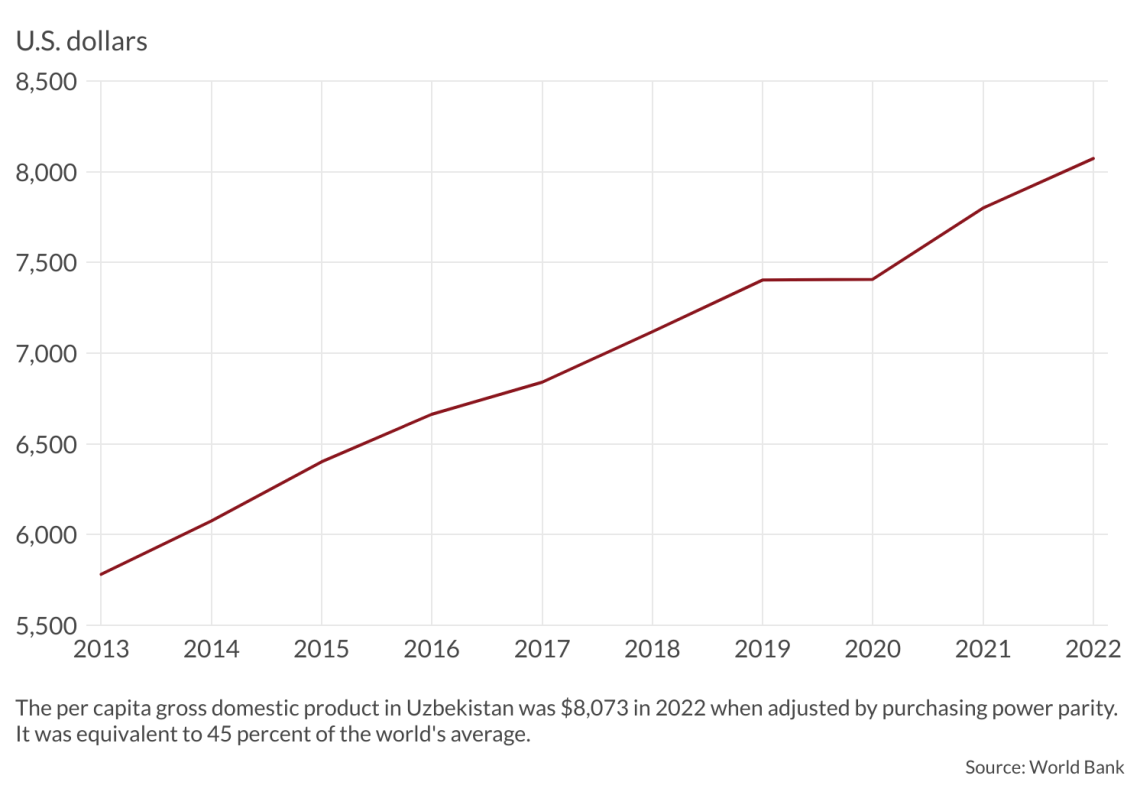Uzbekistan may have another president for life
President Shavkat Mirziyoyev’s landslide victory after an uncompetitive election followed a change in the constitution that may keep him in power until at least 2037.

In a nutshell
- President Mirziyoyev changed the rules before his credibility started to suffer
- His authoritarian turn threatens to unravel social and economic progress
- Like his predecessor, he appointed his daughter to a high position
On July 9, Uzbekistan’s President Shavkat Mirziyoyev was reelected with a resounding 87 percent of the vote, in a contest that authoritative international observers assessed as unfair and uncompetitive.
Formally, this secures his position for another seven years. In practice, it may mean a lifetime presidency. The election followed a constitutional amendment approved in a referendum on April 30 that lengthened the term of the presidency from five to seven years. In so doing, it also reset the clock on the maximum two terms allowed by the constitution.
Mr. Mirziyoyev was first elected president in 2016, following the death in office of Islam Karimov, the dictator who ran Uzbekistan since 1989 in Soviet times.
Constitutional shenanigans
Having secured initial reelection in 2021, the incumbent president’s term in office would ordinarily have ended by 2026. But following the constitutional amendment, he may now look forward to the possibility of two additional seven-year terms and a likely option of a second constitutional amendment to make him president for life.
There is precedence for such constitutional shenanigans. The same games were played by Karimov and by Russian President Vladimir Putin in 2008. When the Kremlin strongman secured an amendment to the Russian constitution, he achieved precisely the same outcome of allowing himself the possibility of two additional six-year terms, on top of the two four-year terms he served from 2000 until 2008. The gambit was repeated in 2020, extending his hold on power beyond 2024.
What differentiates the case of Uzbekistan is that the constitutional amendment was made at a time when the incumbent had enjoyed a good run, associated with high expectations for fundamental reforms to transform the country, including greater freedoms and economic progress. The decision to call a snap election under the new rules suggests that the regime felt it was under serious pressure, that the reforms were turning sour and that Uzbekistan may be looking at a bleak future.
In his state-of-the-nation address on December 20, 2022, President Mirziyoyev was clearly focused on countering mounting public discontent. Promises ranged from a boost in gas exploration that would help alleviate an energy crisis to the purchase of 1,000 new buses to improve public transport. He also pledged leaner government by slashing the number of government agencies in half.
More by Stefan Hedlund on Uzbekistan
Uzbekistan’s bumpy ride out of Russia’s orbit
Uzbekistan emerging from isolation
Rollback in freedoms
What the president did not address was the rapid deterioration in the country’s legal and political institutions. His promise to enhance the protection of property rights by requiring confiscation in the courts, rather than by prosecutors, suggested a lingering deep rot in the legal system. Recent crackdowns on opposition activities also suggest that an authoritarian swing is in progress.
In a report on August 17, RadioFreeEurope/RadioLiberty noted that following a period of greater freedom of speech, Uzbekistan has returned to “binge-arresting and imprisoning bloggers.” As United States President Joe Biden was preparing to meet all five Central Asian leaders on September 19, on the sidelines of the United Nations General Assembly, Human Rights Watch called on him to “put human rights at the center,” noting that in Uzbekistan, legislative reform had stalled while media restrictions and the political persecution of bloggers had increased.
There is a disturbing parallel here to the case of Russia. Mr. Putin was once admired as the guarantor of a new Russia. But hopes for a society based on liberal democracy and a rules-based market economy quickly evaporated. Such a positive outlook for Uzbekistan was initially made in the early years of President Mirziyoyev’s rule. He is now, instead, losing much of his credibility.
Facts & figures
Remembering the ruthless Karimov
Islam Karimov was a product of the Soviet Union. He had ruled the country as an autocrat since first becoming president after independence in 1991, following his tenure as Communist Party first secretary in Uzbekistan starting in 1989 near the end of the Soviet Union. His track record was a sordid one, featuring economic backwardness and human rights abuses. At the time of his death seven years ago, there were widespread fears of a chaotic succession. All such fears were quickly put to rest.
Having served as prime minister from 2003, Mr. Mirziyoyev won significant popularity. Once elected president, he hit the ground running, launching a program of reforms that generated high expectations. In November 2018, he presented a “Reform Roadmap” for the years 2019-2021 that impressed foreign investors. In December 2019, The Economist gave Uzbekistan its “country of the year” award, proclaiming that “no other country traveled as far” in implementing economic and other reforms.
He also made waves by easing prior restrictions on Islam, promising that Uzbeks would be able to “walk the streets freely and without fear.” It was a big deal when the public call to prayer was allowed in 2017. All of this provided a major turnaround in international sentiment, which had deteriorated significantly because of a 2005 massacre in Andijan, in which Karimov ordered his forces to fire on peaceful protestors, killing hundreds, although the precise number remains unknown.
With the ostensibly brighter era of Mr. Mirziyoyev, the U.S. removed Uzbekistan from its list of countries “of particular concern.”
A new era brings economic hopes
Having weathered the Covid-19 years, the Uzbek economy is still looking good to investors. It represents a market of 35 million people that is undersupplied in a range of goods and technologies. In mid-May this year, the European Bank for Reconstruction and Development (EBRD) convened for a three-day annual meeting in Tashkent. The last time it had convened there was in 2003. Some recalled how President Karimov had responded to speeches on the abysmal state of human rights protection by demonstratively removing his headphones and covering his ears. This time was different.
President Mirziyoyev spoke about the “completely new environment of New Uzbekistan, which is opening up to the world and is committed to cooperation in all areas.” There were plenty of foreign investors present, noting that in 2022 alone the EBRD had allocated $900 million on projects in Uzbekistan. Recent roadshows to woo investors in Germany, Italy and France had been well received, and markets were upbeat about the pending reelection of President Mirziyoyev. In the words of analyst Alex Melikishvili of S&P Market Intelligence, it “safeguards political stability and policy continuity in Uzbekistan, which is what foreign investors typically look at when weighing market entry.”

Balancing Russia, Turkey and China in foreign policy
An important key to the success of Uzbekistan has been its pursuit of a “multi-vector” foreign policy, based on “balanced equidistance” between different partners. As the role of Russia has declined, China has emerged as the most important among these partners.
Under the aegis of President Xi Jinping’s Belt and Road Initiative (BRI), the Middle Kingdom has made major investments in Uzbek infrastructure. A prominent example is the 4,380-kilometer China-Kyrgyzstan-Uzbekistan railway that will link the Chinese city Lanzhou with Tashkent, crossing some seriously challenging terrain. There are also plans for a China-Tajikistan-Uzbekistan motorway and China Southern Power Grid plans to build three large hydropower plants.
The main power that Uzbekistan relies on to balance the influence of China is Turkey. In 2019, it joined the Organization of Turkic States, boosting Turkish President Recep Tayyip Erdogan’s pan-Turkic agenda, and in March 2021 the two sides held joint military drills on the border with Afghanistan. While the latter suggests that defense cooperation will form an important part of the strategic partnership, mutual trade has also been rising. When President Erdogan visited Tashkent in March 2023, he could note that Turkey’s exports to Uzbekistan had more than doubled since 2016.
What may still cause the Uzbek success story to unravel is the ongoing erosion of legal and political institutions that are vital for economic success.
While relations with China and Turkey hold promise for continued positive developments, Uzbekistan has reason to be concerned about two of its other partners. One is Afghanistan, where Tashkent has placed a wager on building transport infrastructure to link its part of the BRI with ports on the Indian Ocean. It has invested in a high-speed rail link to the Afghan border, and it recently inaugurated a headquarters in Tashkent to coordinate the construction of a 760-kilometer railroad across Afghanistan to Pakistan. Yet, although the Taliban regime depends on Uzbekistan for 60 percent of Afghanistan’s electricity and receives half of its imports on a single-track line from Uzbekistan, it is doubtful that much will come of this.
The relations with Russia are even more troubling. The war in Ukraine has provided a boost to mutual trade, as Russia needs to compensate for the loss of markets in the West and is using transit trade to evade Western sanctions. And it has resulted in the arrival of large numbers of Russian men seeking to avoid being sent to the war in Ukraine. The new arrivals bring with them cash transfers that feed into the Uzbek banking system. Prompted by severe cold during the past winter, Uzbekistan has also started importing Russian gas. In June 2023, Gazprom announced that it will be providing 2.8 billion cubic meters over the coming two years. While these developments bring short-term benefits, the very real danger of a serious downturn in Russia suggests that the increasing reliance may be unhappy news.
The regime takes an authoritarian turn
Investors still have good reasons to remain upbeat about the prospects for doing business in Uzbekistan. On October 17, meeting at the Belt and Road Forum in Beijing, President Mirziyoyev and Chinese President Xi Jinping agreed to boost bilateral trade over the coming five years to $20 billion, from an expected $10 billion in 2023. The deteriorating security situation points to a boost in defense cooperation with Turkey, including the now famous Bayraktar drones and other high-tech weaponry. A recent decision by Uzbekistan and Azerbaijan to set up a joint logistics company will help cut red tape on the flow of goods along the “Middle Corridor” of the Trans-Caspian International Transport Route that links China with Europe. Uzbek cargo through the port in Baku almost doubled in 2022.
The downside on the economic front features concern about the “debt-trap diplomacy” that secures privileges for Chinese companies over Uzbek competitors. Funding for the BRI is no longer as lavish as it was, and optimism about economic cooperation with Turkey is tempered by the Turkish economy’s poor shape.
President Mirziyoyev has opted to follow the pattern of his predecessor.
There is also a real danger that the increasing reliance on Russia may backfire. By revitalizing old networks, the arrival of large numbers of young Russian men will have a negative impact on corporate governance. The increasing dependence on Russian gas will enhance this impact, and there is a clear danger that a serious downturn in the Russian economy will have cascading effects on Uzbekistan.
On the domestic front, the country is looking at a new wave of religious radicalization that is being met by detentions, interrogations and forced beard shavings. Orders have also been issued that the volume on calls to prayer must be turned down. These developments conjure up the danger of a return to the past of violent confrontations with radical Islamists, which feeds into the authoritarian turn of the regime.
Scenarios
Given that economic indicators remain positive, the outlook for the future is contradictory. With recorded growth in gross domestic product of 5.7 percent for 2022 and a projected growth of 5.3 percent for 2023, there is a good deal of momentum that will carry the economy forward. This outlook is supported by the massive increase in cash transfers boosting the current account and supporting the currency. A renewed impetus of BRI investment will also be helpful. The strong momentum of positive economic development may suffice to trump mounting concerns about increasing authoritarianism.
What may still cause the Uzbek success story to unravel is the ongoing erosion of legal and political institutions that are vital for economic success. The likely outlook is reminiscent of what happened in Russia during the second term of the Putin presidency. While there was mounting concern about “democratic backsliding,” market analysts remained upbeat about positive economic forecasts, optimism that proved to be unfounded.
The message for Uzbekistan is that a turn to an autocratic exercise of power and a muzzling of all opposition will undermine the prospects for continued economic success. It is symptomatic that President Mirziyoyev has opted to follow the pattern of his predecessor in appointing his daughter, Saida Mirziyoyeva, to high office. Given the track record of corruption that was associated with Gulnara Karimova, the daughter of the late dictator, the promotion of Ms. Mirziyoyeva sends a disturbing signal of what may lie ahead.
For industry-specific scenarios and bespoke geopolitical intelligence, contact us and we will provide you with more information about our advisory services.









